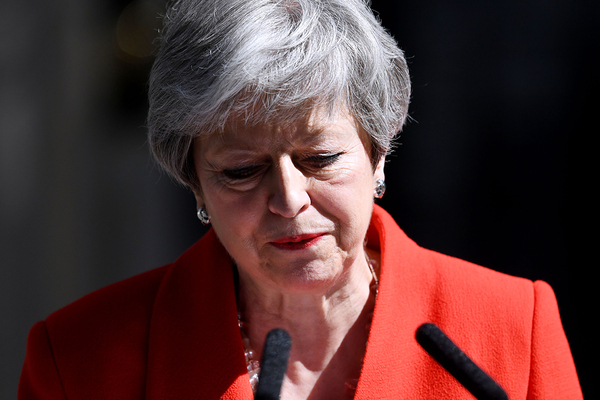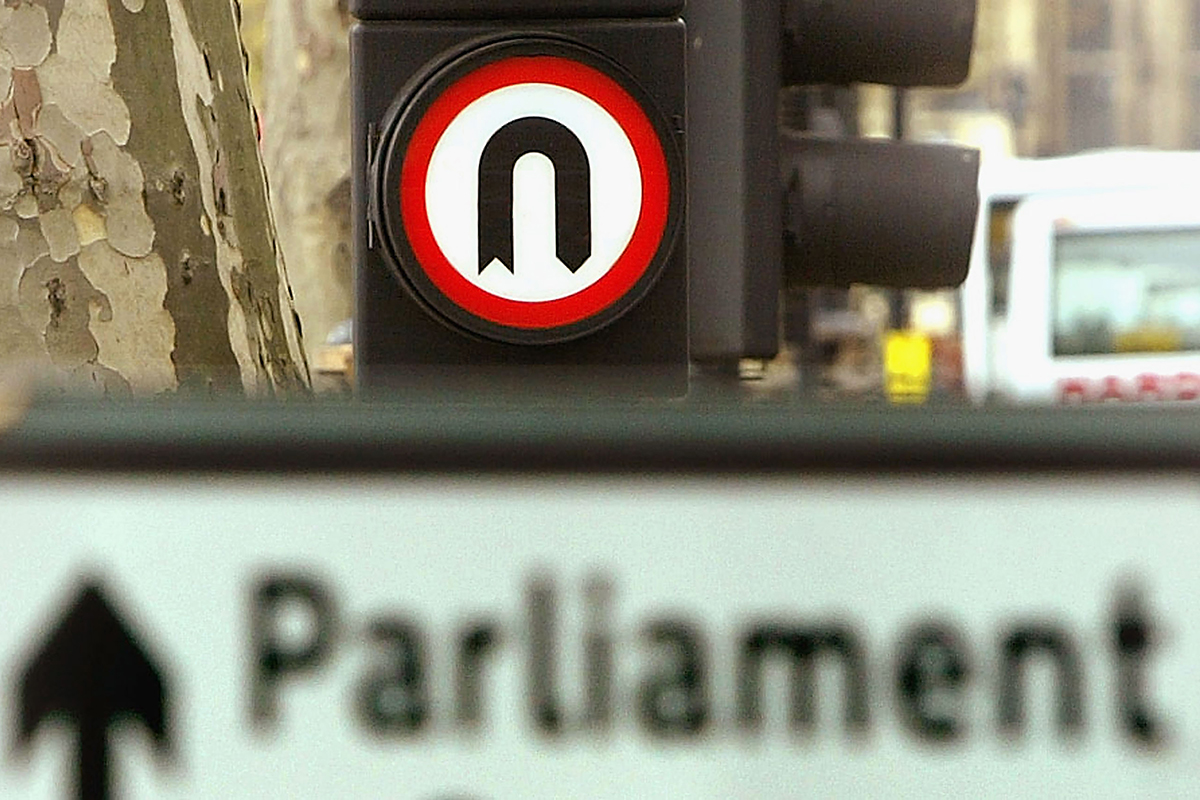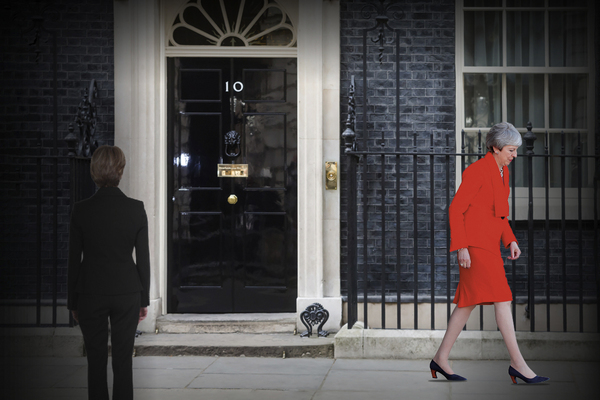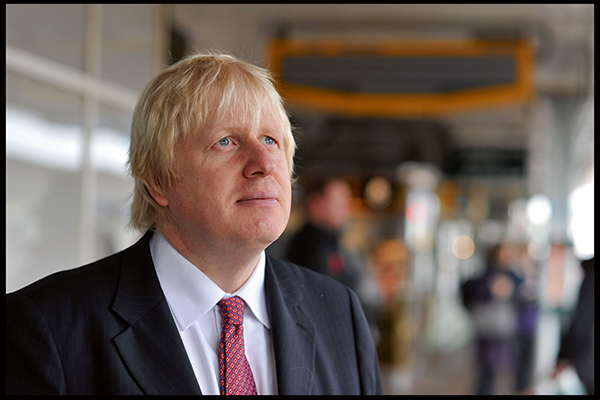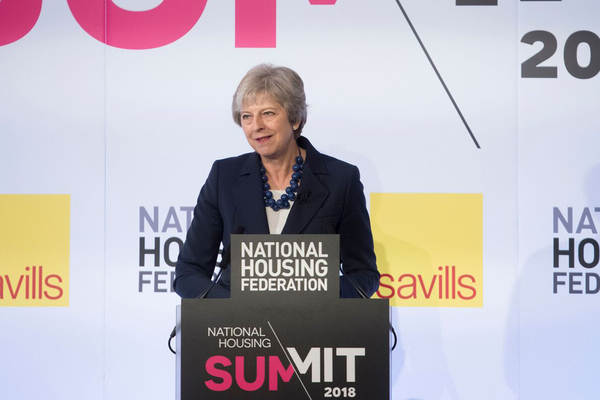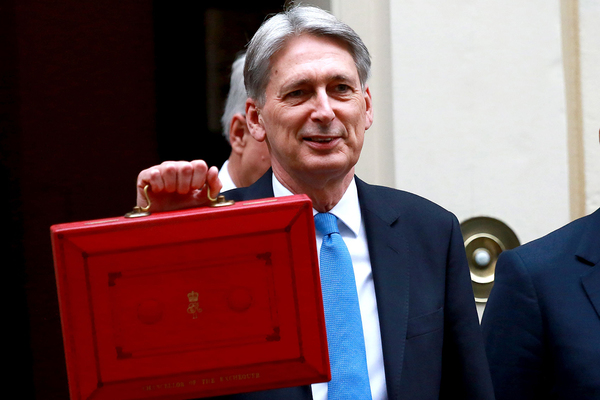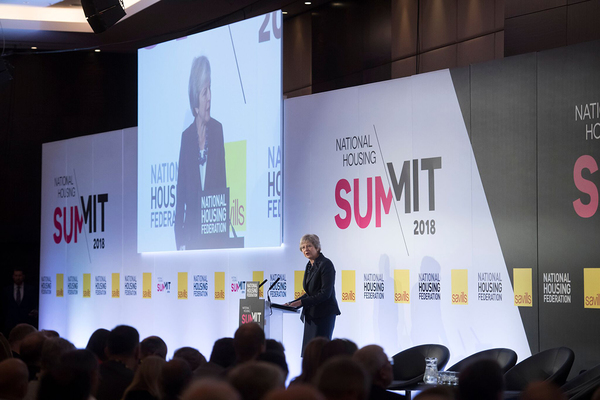You are viewing 1 of your 1 free articles
Theresa May’s legacy on housing: bold ambitions unfulfilled
Theresa May will be remembered for her struggles with Brexit, but it was housing policy which she made her “number one domestic priority”. Peter Apps assesses her record.
After a tearful resignation on the steps of Downing Street, Theresa May’s time as prime minister is over. Almost three years ago, she stood in the same place and promised to fight for families who were “just about managing”.
In the time that has followed, she has taken greater personal political control of housing policy than any prime minister for a generation, and in doing so has rolled back some of the worst aspects of the David Cameron and George Osborne-driven attack on social rented housing that had defined the previous six years.
But as her struggles with Brexit have swollen into an all-consuming monster, progress on her housing policy ideas have stalled. She leaves office with many pledges unfulfilled and ideas incomplete.
Here are five takeaways on her time as leader:
1. The first year – a turn in the tide
Theresa May did not wait long to make a clear break from her predecessor’s direction.
At the Autumn Statement in 2016, Theresa May’s first major fiscal event just a few months into her premiership, a number of measures were announced which Inside Housing hailed as the “dismantling of [George] Osborne’s legacy”: compulsory Pay to Stay was ditched, the Right to Buy extension booted into the long grass and funding for sub-market rent returned. We take some of these measures for granted now, but they marked a sharp change in the housing policy that had defined the preceding six years.
“It was hobbled by opposition from the hard right of the party who objected to plans to increase building on the green belt – an unhappy signal of things to come for Ms May’s time in Downing Street”
Early in 2017, a Housing White Paper followed. This promoted much of Ms May’s philosophy on housing: multi-tenure building, chiding the house builders to do more and promoting the work of housing associations. It laid the groundwork for the launch of Homes England and ditched Starter Homes, another policy disaster left by Mr Cameron. But it was also hobbled by opposition from the hard right of the party who objected to plans to increase building on the green belt – an unhappy signal of things to come for Ms May’s time in Downing Street.
Perhaps though it’s another flagship policy from this period that best sums up her premiership: the government announced with great fanfare that it would ban letting agency fees in November 2016. Despite being name-checked in almost every speech on housing she has made since, this policy has sat firmly on the backburner as other more pressing matters have taken priority. Three years on, her leadership is over before it comes into force.
2. The shadow of Grenfell
The shadow of Grenfell will be second only to Brexit in looming over Theresa May’s time as prime minister.
The moment, a day after the fire, when she fled to a waiting car without stopping to speak to the gathered community became an icon of the gap between the political class and the victims in the chaotic days after the disaster. She would later apologise for it.
Her response to Grenfell has been marked by delay, indecisiveness and a failure to see promises through. Days after the fire, she promised to rehouse survivors in three weeks. Two years on, 17 families are still in hotels or temporary accommodation.
Similarly, her statement that the “legacy of this awful tragedy” would be action to bring tenants into the political process has fallen flat. The National Tenant Voice wrote a frustrated open letter about the lack of progress last month.
The centre piece of the government’s post-Grenfell response was supposed to be its much-vaunted Social Housing Green Paper. But the progress of delivering it was hampered by Brexit-related reshuffles. When it was finally published it was almost universally derided as being too soft and underdeveloped. A white paper fleshing out its proposals has also been delayed as the political bandwidth is consumed by Brexit. Theresa May leaves office without seeing a single one of its proposals brought into force.
“Perhaps the last word on her Grenfell legacy is best given to the survivors of the blaze: ‘Nothing has really changed. The government action can best be summed up as indifferent and incompetent’”
The approach to building safety elsewhere has also been too slow. Hundreds of towers remain clad with aluminium composite material and an unknown number with materials of other kinds. The government has only provided funding for the removal of these materials as a reaction to pressure and was set to not even ban the use of combustible materials on new buildings before pressure from survivors forced a U-turn. Pressure for more ambitious steps, such as ordering the retrofit of sprinklers or carrying out a wider audit of tower blocks, has led nowhere.
The philosophy has been that the safety of buildings is mainly a matter for owners and the state should not step in. But Grenfell was a national crisis which demanded national leadership and, in the context of ensuring other buildings are safe at least, this has been largely absent.
Ms May has genuinely tried to make Grenfell a major priority. But the sad fact is that she has been left too politically weak and distracted by Brexit to focus on delivering the change survivors and bereaved have asked for.
Perhaps the last word on her Grenfell legacy is best given to them: “Nothing has really changed. The government action can best be summed up as indifferent and incompetent.”
3. Coughing up for social rent
Perhaps Theresa May’s biggest contribution to housing policy over the past three years is to rescue new build socially rented housing from the bin it was placed in by George Osborne and David Cameron.
For the six years since the Spending Review in 2010, no public money had been committed for new social rent for the first time since World War II.
Theresa May turned this around. Her conference speech in 2017 is remembered as a car crash when she was laid low by a cough, but that obscured the fact that she announced grant funding for new, genuine social rented homes for the first time this decade.
A year later, she trumped that, dropping the cap on council house borrowing in its entirety in what is undoubtedly the most decisive and significant housing policy move during her three years in charge and may yet herald a renaissance in council housebuilding.
Housing association leaders will also particularly remember her speech at the National Housing Federation conference last year. She is the first prime minister to attend a sector event and her speech placed social landlords and affordable housing at the centre of her domestic policy agenda. The strategic partnerships Homes England has developed on her watch will also likely bare fruit in terms of affordable and social housing delivery in years to come.
As Theresa May leaves office, the numbers of new social rented homes being built remain at a historic low – just 6,436 in a year, the second-lowest on record. But if her legacy could be to have finally ended the decade-long decline in that number. And that is no small thing.
4. Welfare reform and homelessness
The difficult implementation of Universal Credit has been a years-long problem in the making and Theresa May picked up the baton of a system which already had fatal flaws.
Credit must go to her administration for finally recognising and addressing some of these, but there is also frustration among campaigners that more could not be done, specifically a pausing of the roll-out while the problems are truly fixed. With so many U-turns, and the level of opposition to Universal Credit, surely this one would not have been too much to ask.
There have been positive steps in other areas: plans to extend Local Housing Allowance (LHA) caps to social tenants were unceremoniously axed, proving a giant relief to those who had warned fruitlessly of the enormous risk, particularly to supported and sheltered housing, of pushing ahead. A cut to under-21s’ housing benefit was also sensibly ended.
But in the private rented sector, cuts to LHA have not been reversed – leaving claimants simply unable to access housing in many areas and undoubtedly hampering the government’s push to reduce homelessness.
Ending homelessness has always been cited as a top priority for Ms May and the appointment of Toby Lloyd, formerly of Shelter, to her top team seems to have resulted in some positive steps. The increasing priority given to policies like Housing First and the introduction of homelessness prevention duties have been broadly welcomed by charities – but the message remains clear: without reversing a decade of cuts to benefits, support services and local authorities, this problem is not going to go away.
5. Changing the direction of travel - May's legacy
So how to properly analyse Theresa May’s time as leader for housing?
In the end, her biggest contribution is what she has not done. Advised by her chief of staff and former housing minister Gavin Barwell, she has been bold in her refusal to push ahead with the Policy Exchange-driven policy of the Osborne/Cameron era. As a result, high-value council homes have not been auctioned off, Starter Homes have not replaced affordable housing and Pay to Stay has not been introduced for social tenants.
More broadly, by giving such a personal priority to things like developing new social housing and ending homelessness, she has successfully moved the policy ground of the Conservative Party to the centre, and then to the left, at least where housing is concerned. It would have been unthinkable, for example, just a few years ago to hear a Conservative prime minister announce the scrapping of Section 21 evictions in the private sector. Her current policy package is to the left of what Ed Miliband promised in 2015. The conversation has changed. Some of this is due to events around her, but she has driven it, too.
However, in the end her attempt at reform has been defined by projects unfinished, ideas abandoned and gratingly slow progress as Brexit came to dominate everything.
This has been frustrating. But if (or when) whoever follows her changes the conversation again, those involved in housing may discover they miss her more than they realise.
Peter Apps, deputy editor, Inside Housing
Related stories

